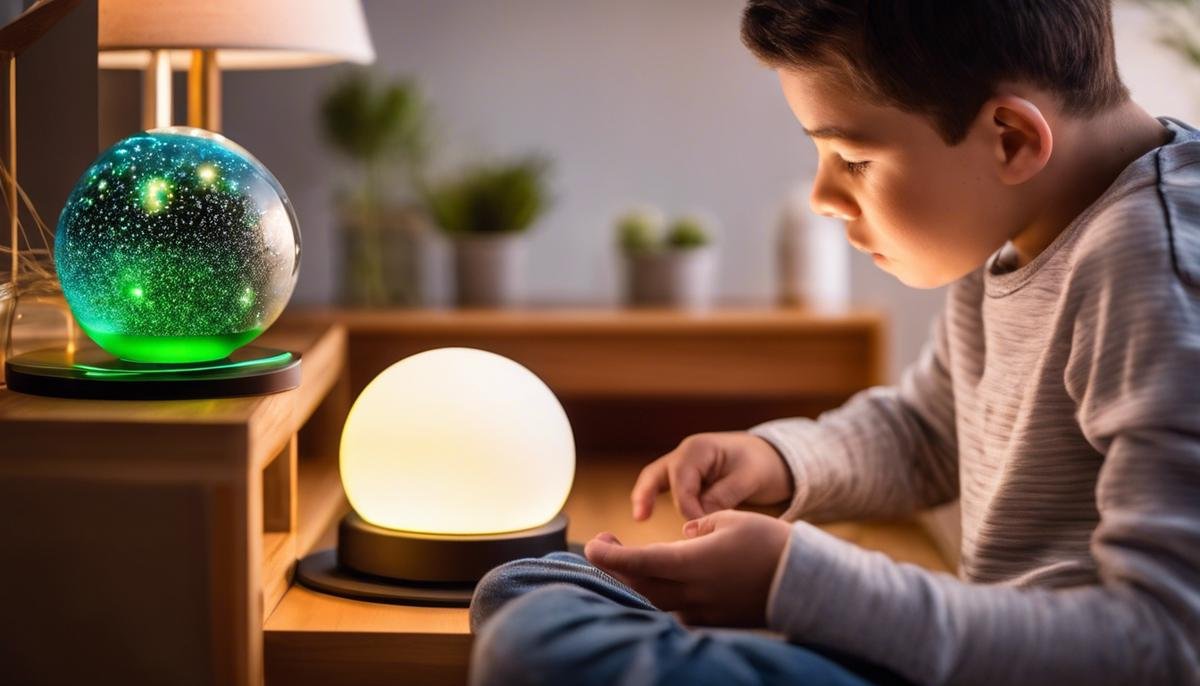
The intricate nuances of our sensory world can often be overshadowed by the rush of daily life. Yet, for individuals with autism, the intense experience of sensory stimuli, including scents, can profoundly shape their existence. The journey of understanding olfactory sensitivity in autism is not just a scientific inquiry; it represents a significant stride toward empathizing with the unique perspectives of those on the autism spectrum. This essay embarks on an exploration of how a heightened sense of smell can influence the everyday lives of autistic individuals and the intricate manner in which their sensory processing operates. We weave in the rich tapestry of personal experiences from within the autism community to paint a vivid picture of the realities faced by families and individuals navigating a world that is often overwhelming in its intensity.
Understanding Olfactory Sensitivity in Autism

Strategies to Manage Sensory Challenges
Crafting a Haven: Tailoring Your Home for Sensory-Sensitive Loved Ones
In the parenting journey, understanding the nuanced needs of sensory-sensitive children can turn a household into a sanctuary of comfort. Such sensitivity extends far beyond the olfactory realm, touching upon all the senses; creating a home that caters to these needs is vital.
For starters, auditory sensitivity is common in sensory-sensitive children. To curtail noise levels, consider incorporating soft, thick textiles like rugs and curtains to absorb sound. Also, be mindful of the potential overstimulation from multiple active noise sources, such as televisions and kitchen appliances running concurrently. Introducing white noise machines or acoustic panels can also make a world of difference in managing auditory stimuli.
Visual sensitivity is another key area—harsh lighting can be jarring. Opting for adjustable and softer lighting options, like dimmers or lamps with warm-toned LED bulbs, allows for modulation according to a child’s comfort. Certain color palettes are soothing, while others might agitate; selecting calming hues for walls and decor, such as soft blues and greens, helps establish a visually serene space.
Tactile sensitivity profoundly affects day-to-day comfort. Clothing tags or seams could be bothersome, so choose garments with care, thinking soft, tagless, and seamless whenever possible. Similarly, bedding and furniture fabrics should be selected with a gentle hand, avoiding textures that might irritate sensitive skin.
Lastly, it’s essential to ensure that the home allows for safe sensory breaks. A dedicated quiet space, free from overwhelming stimuli, provides a crucial retreat. Equipping this area with comfort items, like weighted blankets or comforting tactile objects, invites self-regulation and provides a reprieve from sensory overload.
Above all, fostering open communication helps pinpoint specific needs within the spectrum of sensory sensitivity. Regular check-ins with the child about their comfort levels empower them to express their needs and adjustments to be made. By involving them in the decision-making process, a greater sense of control and ease is cultivated within their environment.
Creating an accommodating atmosphere doesn’t have to be daunting. Through simple, mindful modifications and a dash of empathy, families can transform their homes into a nurturing space, where sensory-sensitive children feel understood, supported, and above all, comfortable.

Encouraging Social Inclusion and Understanding
Embracing Differences: Encouraging Social Acceptance for Children with Sensory Sensitivities
As parents and caregivers, it’s our heartfelt mission to create a world where our children can flourish, no matter their unique needs or challenges. When it comes to children with sensory sensitivities, fostering social acceptance transcends the boundaries of our homes and classrooms—it’s about paving the way for inclusivity in every social sphere.
Taking the leap from awareness to acceptance means actively teaching peers and community members about sensory sensitivities. Education is powerful, and by sharing knowledge about how certain stimuli can affect children, we open the doors to understanding and empathy. This isn’t about singling out children with sensitivities; rather, it’s about celebrating diversity and the various ways we all experience the world.
Let’s talk about playdates and social gatherings. It’s crucial these events are inclusive and comfortable for sensitive little ones. Proactive dialogue with other parents and organizers can ensure activities are sensory-friendly. This can be as straightforward as offering alternative activities or letting others know ahead of time what environments work best for your child.
In schools, collaboration with educators is key in building an inclusive environment. Schools can play a phenomenal role by integrating sensory-friendly strategies into the curriculum and daily routines. For example, students can learn about the value of quiet time, or how alternative seating arrangements can benefit those who might feel overwhelmed by too much touch or proximity.
How about public spaces, you might ask? It’s about engaging with local businesses and organizations to offer sensory-sensitive days or hours, where lighting is dimmed, music is turned down, and crowds are minimized. It’s all about taking small, proactive steps that signal to families that their needs are recognized and respected.
Beyond modifying our environments, fostering acceptance can be deeply ingrained in our daily conversations. Encourage children to ask questions, share their feelings, and respect the personal space and comfort levels of others. This isn’t just about being polite; it’s about nurturing a culture where differences are not merely tolerated but embraced.
Lastly, remember it’s not only about our children adapting to the world; it’s equally about the world embracing our children as they are. Acceptance grows from understanding, and understanding is sparked by open hearts and minds. By cultivating a community ethos of sensitivity and support, we set the stage for all children to find their place – and their peace – in the vibrant tapestry of society.
So, let’s continue to champion for the wellbeing of every child, trust in the ripple effect of our collective efforts, and look forward to a future rich in acceptance and understanding. Here’s to building a community where every child knows they belong.

As the tapestry of human diversity unfolds, it becomes increasingly clear that our collective commitment to understanding and accommodating each other’s sensory experiences enriches our communities. The conversation about olfactory sensitivity and autism is not just about recognizing differences; it is a testament to our societal growth towards embracing neurodiversity. The strategies outlined and the stories shared offer a beacon of hope and a roadmap for creating more sensory-friendly environments that foster social inclusion. By championing these efforts, we open our arms wider to a world where every individual’s experience is validated, and the fragrance of inclusion can be sensed by all.




